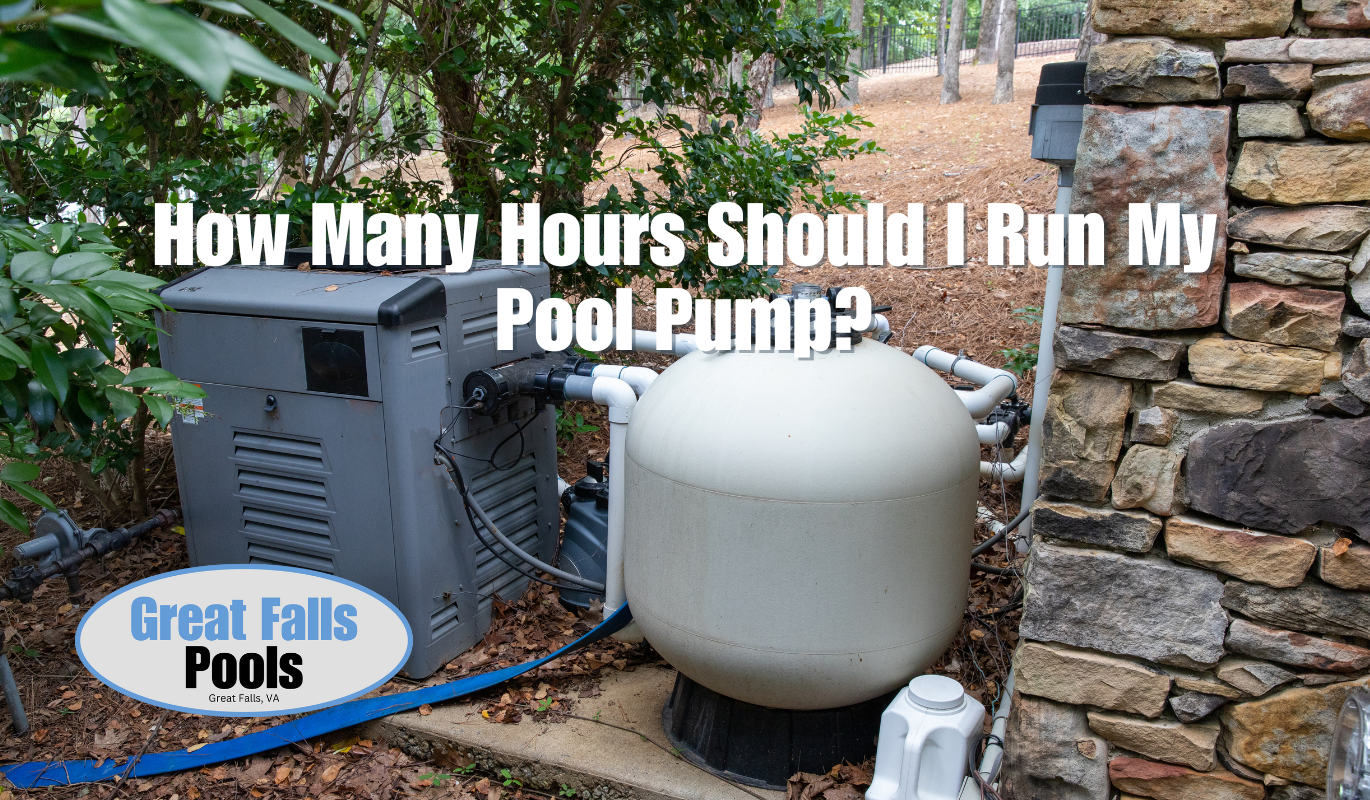If you own a pool in Northern Virginia or Washington, DC, one of the most common questions is how many hours should I run my pool pump? Run it too little and your water turns cloudy or unsafe. Run it too much and you waste energy and money.
This guide explains how to find the right pump schedule for your pool based on its size, your equipment, and your energy-saving goals.
Why Your Pump Matters
Your pool water filter pump is the heart of your pool’s circulation system. It pulls water through the filter to trap debris, dust, and bacteria. To keep your pool safe and clear, the entire volume of water should be filtered multiple times per day.
But how long does a pool pump need to run to do the job right? It depends on your pool’s size, the pump’s flow rate, and its horsepower.
Step 1: Estimate Your Pool’s Volume
Start by calculating how much water your pool holds. Use this formula:
Length × Width × Average Depth × 7.5 = Total gallons
For example, a 10,000-gallon pool is common in many backyards in Northern Virginia. This number is key to figuring out how long you need to run your pump.
Step 2: Understand Turnover Rate
A “turnover” is when all the water in the pool has passed through the filter once. Most pools need 3 to 4 turnovers daily for proper filtration. So, if you have a 10,000-gallon pool, you’ll need to move 30,000 to 40,000 gallons through the system every 24 hours.
That’s where flow rate comes in.
Step 3: Know Your Pool Pump Flow Rate
To figure out how long your pump should run, you’ll need to understand its gallons per minute rating. Most 1 horsepower pool pump motors and 1 horsepower Hayward pool pump models move around 60 gallons per minute, though this can vary based on plumbing and filter size.
Here’s a quick example:
- Pool size: 10,000 gallons
- Desired turnover: 3 times (30,000 gallons)
- Flow rate: 60 gallons per minute
At that rate, your pump would need to run about 8.5 hours per day. (60 GPM × 60 minutes × 8.5 hours = 30,600 gallons)
If you use a 1.5 hp pool pump gpm rating, or even a 2 hp swimming pool pump, your runtime may be lower—but your energy cost could be higher. That’s why many homeowners are switching to variable-speed pumps that run longer at lower speeds and save on power.
Why Flow Rate Varies
Even with a 1 hp Hayward pool pump or a 1.5 horsepower pool pump motor, your actual flow rate can change depending on:
- Plumbing pipe size
- Filter size and type
- Elevation differences
- Condition of the filter motor for swimming pool setups
For the most accurate result, use a swimming pool pump size calculator or install a pool flow gauge to monitor real-time performance.
Split Your Pump Time for Better Circulation
If you don’t want to run your pump for 8 or more hours straight, split the time into two cycles. This helps prevent water from sitting still for too long and keeps your pool cleaner, especially during warmer months in Northern Virginia and DC.
Should You Run Your Pump 24/7?
Not necessarily. But if you upgrade to a variable-speed water pool pump, you can run it on low all day for better energy efficiency. These systems are quiet, reliable, and filter water more evenly. Plus, newer pool pump 1.5 hp motor and 2 hp pool pump options are built to handle long hours with less wear.
Not Sure What Size Pool Pump for 10000 Gallons?
That’s where we can help. At Great Falls Pools, we work with homeowners across Northern Virginia and Washington, DC to assess their pool needs and recommend the best equipment. Whether you need a 1 hp pool pump motor or a full system upgrade, we’ll make sure you’re set up for clean, efficient operation.
Need help figuring out your runtime or choosing the right pump for pool filtration? Contact us today to schedule a consultation or ask about upgrades.
Want to visit us? Find us on Google Maps and swing by—we’re happy to help you get the most out of your pool system.




Leave a Reply